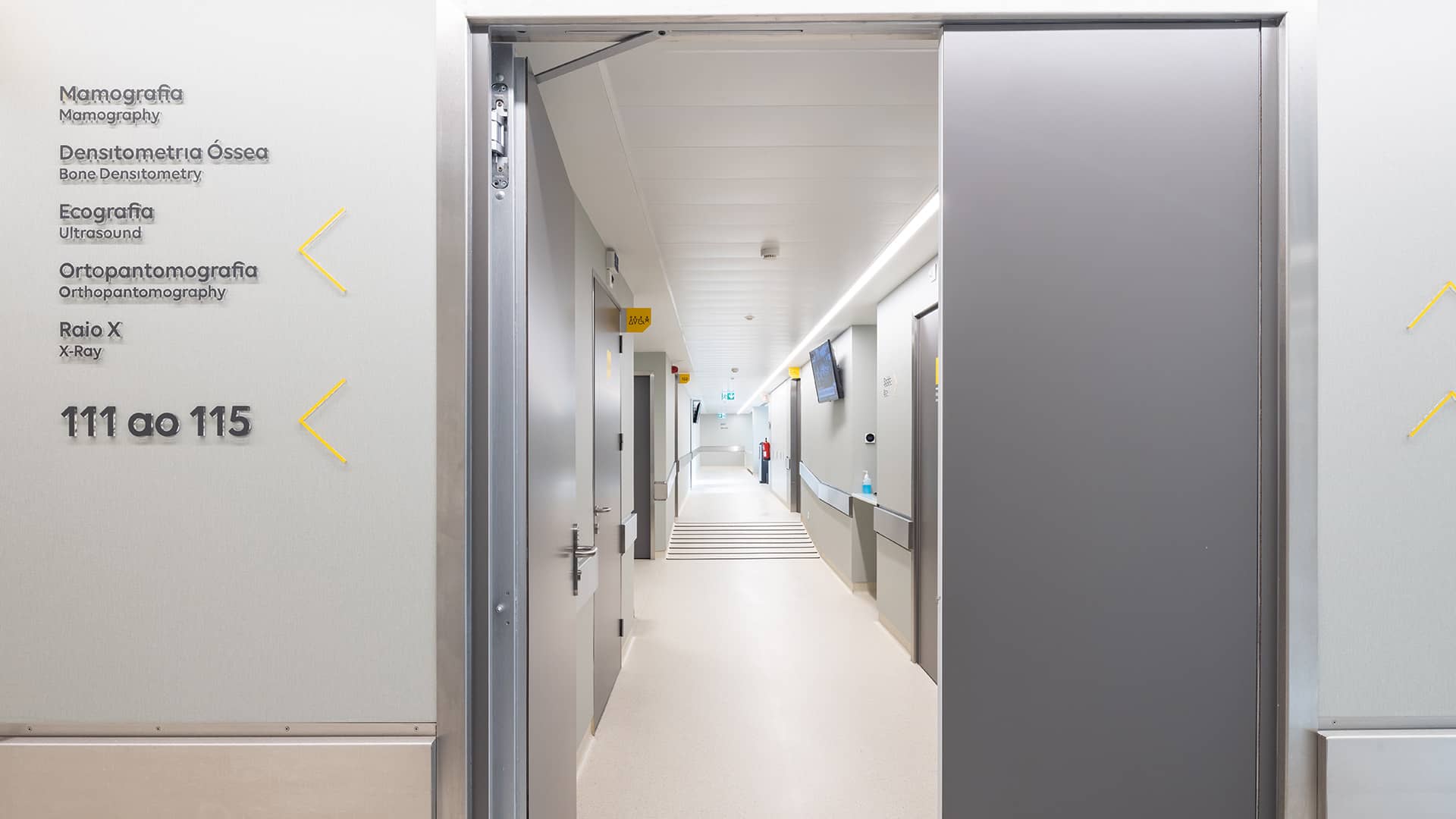In just 10 seconds, it allows for the evaluation of 39 different anatomical structures. Find out what orthopantomography is, what it's used for, and in which cases it's necessary.
Orthopantomography is one of the most common examinations in Dentistry. It accurately assesses the health and anatomy of patients' mouths and provides important guidance for surgical interventions. Discover what it is, how it's done, and when it's necessary.
Orthopantomography: what is it?
Orthopantomography is a type of panoramic radiography that allows for the visualization of all anatomical structures in the lower third of the face in a single image. Since the anatomy of the jaws and dental arches is curved, the panoramic nature of this examination provides a comprehensive and complete view of the mouth. The dentist can thus identify periodontal diseases, changes in bone structure, possible congenital anomalies, and the presence of impacted teeth. This is one of the most commonly used diagnostic imaging tests in Dentistry. Orthopantomography is fast, comfortable, painless, and safe, emitting minimal levels of radiation. The image is produced and stored in digital format.
Orthopantomography: what is it used for?
Orthopantomography is used to diagnose various dental pathologies and plan their respective treatments. It is frequently used for dental implants, oral surgeries, orthodontics (dental alignment), and periodontics (treatment of diseases affecting tooth implantation and support). However, there are more specific cases where a more detailed image of dental structures is required. Some specific examples include:
- Detailed assessment of a patient's dental condition (number and position of teeth, bone level, among others)
- Identification of reduced bone density, cysts, and other lesions affecting the observed structures
- Diagnosis of periodontal disease
- Evaluation of the progress of orthodontic treatments
- Identification of wisdom teeth
- Monitoring dental growth in children
- Identification of bone resorption, cysts, and other lesions affecting the structures; identification of changes suggestive of bone problems
- Planning tooth extractions, implant placements, and other dental surgeries
- Detection of jaw tumors, associated or not with oral cancer; diagnosis of benign or malignant tumors of the oral cavity
What are the limitations and risks of Orthopantomography?
The fact that the mouth has a curved shape and the image provided by orthopantomography is two-dimensional or flat can lead to inconclusive results. For this reason, it may be necessary to perform a computed tomography (CT) scan or magnetic resonance imaging (MRI) to obtain more precise and detailed information.
Additionally, like other imaging exams, orthopantomography carries the inherent risks associated with the use of ionizing radiation. However, the level of exposure is minimal, making it a safe examination.
However, some patients may require special care. For example, orthopantomography may be contraindicated for pregnant women, although not absolutely. To cause negative fetal consequences, very high levels of radiation are required. Therefore, the risk-benefit should be evaluated by the prescribing physician, and orthopantomography can be performed whenever the professional considers that the benefits outweigh the risks.
When orthopantomography is performed in pediatric settings, it is crucial to reassure the child by explaining the procedure based on their age. The child's cooperation is essential for them to remain still during the examination, thus obtaining reliable results, precise diagnoses, and an overall positive experience.
How is Orthopantomography done?
The preparation for orthopantomography follows the same parameters as any other X-ray examination. Therefore, the patient will be asked to remove all metal objects that may interfere with obtaining the image, such as dentures, earrings, necklaces, piercings, hair accessories, and glasses.
The patient can undergo the examination while standing or sitting. They will bite onto a small support to keep the two dental arches separated and ensure that the teeth are not overlapping. This allows for determining and recording the bite position and type.
Next, the patient should keep their head stabilized by resting it on a specific support to avoid movements during the examination. Otherwise, the resulting images may lack sufficient quality, and the orthopantomography will need to be repeated.
Once the patient is correctly positioned, the apparatus rotates around the head to produce a complete panoramic view of the oral structure. It starts from one side of the jaw, passes across the face, and ends on the opposite side of the jaw. This process only takes a few seconds and is painless. The results appear on the screen, allowing the dentist to identify any existing pathologies and plan the most appropriate procedures for each patient.
Orthopantomography at Joaquim Chaves Saúde
The medical clinics of Joaquim Chaves Saúde are equipped with the most advanced technologies, enabling the performance of orthopantomography with maximum safety and precision. In just a few seconds, you can obtain essential information about the condition of your mouth. Schedule your examination now and benefit from state-of-the-art technology to take care of your oral health.
